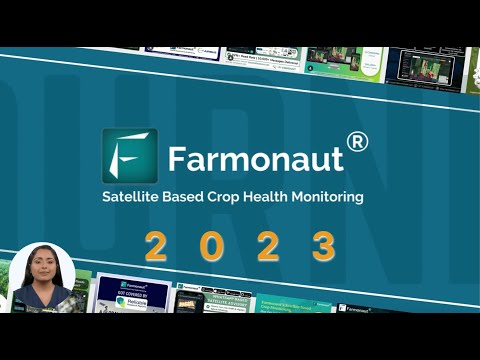Nova Scotia’s Rising Star: How Innovative Vineyard Management Shapes Atlantic Canada’s Wine Tourism
“Nova Scotia’s Annapolis Valley boasts a thriving 130-acre vineyard, transforming the region into a leading wine tourism destination.”
In the heart of Atlantic Canada, a remarkable transformation is taking place. The picturesque landscape of Nova Scotia’s Annapolis Valley has become the stage for an agricultural revolution, one that’s reshaping the region’s economy and putting it firmly on the map as a world-class wine destination. At the forefront of this change is a group of outstanding young farmers who are embracing innovative farming practices and cutting-edge agricultural technology to breathe new life into the province’s vineyards and wine industry.
In this comprehensive exploration, we’ll delve into the inspiring journey of these young agriculturists who have traded city life for the challenges and rewards of managing thriving vineyards in Nova Scotia. We’ll uncover the innovative vineyard management techniques that are setting new standards for viticulture in the region, and examine how these practices are not only producing exceptional wines but also fostering a burgeoning wine tourism industry that’s becoming a significant driver of the local economy.

The Transformation of Atlantic Canada’s Agricultural Landscape
The story of Nova Scotia’s wine industry is one of innovation, perseverance, and a deep connection to the land. In recent years, we’ve witnessed a remarkable shift in the agricultural landscape of Atlantic Canada, with traditional crops making way for rows upon rows of carefully tended grapevines. This transformation hasn’t happened by chance; it’s the result of concerted efforts by forward-thinking farmers who recognized the potential of the region’s unique terroir for grape cultivation.
The Annapolis Valley, with its moderate climate influenced by the Bay of Fundy, has proven to be an ideal location for growing a variety of grape species. The region’s cool nights and warm days create perfect conditions for developing complex flavors in the grapes, while the well-draining soils provide an excellent foundation for vine growth. It’s this combination of natural advantages and human ingenuity that has allowed Nova Scotia to carve out its own niche in the competitive world of winemaking.
Innovative Farming Practices Revolutionizing Viticulture
At the heart of Nova Scotia’s viticultural success story are the innovative farming practices being employed by a new generation of farmers. These young producers are not content with traditional methods; instead, they’re constantly seeking out new technologies and techniques to improve their crop protection, enhance grape quality, and ensure sustainable production.
- Precision Viticulture: Using GPS-guided equipment and drones for targeted application of nutrients and pest control measures.
- Sustainable Pest Management: Implementing integrated pest management strategies that reduce reliance on chemical pesticides.
- Water Conservation: Utilizing drip irrigation systems and soil moisture sensors to optimize water usage.
- Canopy Management: Employing advanced trellising systems and leaf removal techniques to improve fruit exposure and air circulation.
These practices not only improve the quality of the grapes but also contribute to the overall sustainability of the vineyard operations. By reducing input costs and minimizing environmental impact, Nova Scotia’s vineyards are positioning themselves as leaders in sustainable agriculture.
The Role of Agricultural Technology in Vineyard Management
The adoption of cutting-edge agricultural technology has been a game-changer for Nova Scotia’s wine industry. From satellite imaging to AI-powered decision support systems, these tools are enabling farmers to make more informed decisions and manage their vineyards with unprecedented precision.
One such technology that has proven invaluable is Farmonaut’s satellite-based farm management solution. This innovative platform provides real-time crop health monitoring, allowing vineyard managers to identify potential issues before they become serious problems. By leveraging multispectral satellite imagery, Farmonaut offers insights into vegetation health, soil moisture levels, and other critical metrics that are essential for optimal grape production.
The Farmonaut platform’s AI-driven advisory system, Jeevn AI, takes this a step further by providing personalized recommendations based on the specific conditions of each vineyard. This level of customization ensures that every decision, from irrigation scheduling to harvest timing, is optimized for the unique characteristics of each plot.
Sustainable Viticulture Methods: A Cornerstone of Nova Scotia’s Wine Industry
Sustainability is more than just a buzzword in Nova Scotia’s wine industry; it’s a fundamental principle that guides every aspect of vineyard management. The region’s growers have embraced a range of sustainable viticulture methods that not only protect the environment but also enhance the quality of their wines.
- Cover Cropping: Planting diverse species between vine rows to improve soil health and biodiversity.
- Organic and Biodynamic Practices: Many vineyards are transitioning to organic certification or adopting biodynamic principles.
- Energy Efficiency: Implementing solar power and other renewable energy sources in winery operations.
- Waste Reduction: Composting grape pomace and other organic waste to create nutrient-rich soil amendments.
These sustainable practices not only contribute to the long-term health of the vineyards but also resonate with environmentally conscious consumers, further enhancing the appeal of Nova Scotia’s wines in the global market.
The Rise of Wine Tourism in Nova Scotia
As the reputation of Nova Scotia’s wines has grown, so too has the region’s appeal as a wine tourism destination. The Annapolis Valley, once known primarily for its apple orchards, is now drawing visitors from around the world who are eager to experience its award-winning wineries and breathtaking vineyard landscapes.
“Atlantic Canada’s wine industry has seen significant growth, with innovative farming practices contributing to high-quality wine production in Nova Scotia.”
This burgeoning wine tourism industry has become a significant economic driver for the region, creating jobs and fostering a vibrant community of artisanal food producers, restaurateurs, and hospitality providers. Wineries are no longer just production facilities; they’ve evolved into full-fledged tourist attractions, offering guided tours, tasting experiences, and farm-to-table dining options that showcase the best of Nova Scotia’s culinary offerings.
Grape Varieties for Wine Production in Nova Scotia
The success of Nova Scotia’s wine industry is due in large part to the careful selection of grape varieties that thrive in the region’s unique climate. While traditional vinifera grapes like Chardonnay and Pinot Noir have found a home here, it’s the hardy hybrid varieties that truly set Nova Scotia’s wines apart.
- L’Acadie Blanc: A white grape variety that produces crisp, aromatic wines with notes of green apple and citrus.
- Maréchal Foch: A red grape that yields full-bodied wines with rich berry flavors and earthy undertones.
- New York Muscat: Known for its intense floral aroma and sweet flavor profile, perfect for dessert wines.
- Vidal Blanc: Widely used in the production of Nova Scotia’s renowned ice wines.
These grape varieties, along with careful blending and innovative winemaking techniques, have allowed Nova Scotia’s wineries to create a diverse range of wines that cater to a wide array of palates.

Agribusiness Management Strategies in Nova Scotia’s Wine Industry
The success of Nova Scotia’s wineries isn’t just a matter of good grapes and skilled winemaking; it’s also the result of savvy agribusiness management strategies. The young farmers leading this industry have shown remarkable business acumen, implementing strategies that balance profitability with sustainability and community engagement.
- Diversification: Many vineyards offer complementary products and services, such as on-site restaurants, event hosting, and artisanal food products.
- Direct-to-Consumer Sales: Leveraging e-commerce and wine clubs to build loyal customer bases and improve profit margins.
- Collaborative Marketing: Working together to promote the region as a whole, rather than competing as individual businesses.
- Vertical Integration: Controlling all aspects of production from grape growing to bottling and distribution.
These strategies have helped Nova Scotia’s wineries weather economic uncertainties and build resilient businesses that contribute significantly to the local economy.
Challenges Faced by Young Farmers in Canada’s Wine Industry
While the story of Nova Scotia’s wine industry is largely one of success, it’s important to acknowledge the challenges faced by young farmers entering this competitive field. From high start-up costs to the unpredictability of weather patterns, these agriculturists must navigate a complex landscape of obstacles.
- Financial Barriers: The high cost of land and equipment can be prohibitive for new entrants.
- Climate Uncertainty: Changing weather patterns and extreme events pose significant risks to grape crops.
- Market Competition: Competing with established wine regions both domestically and internationally.
- Regulatory Hurdles: Navigating complex regulations surrounding wine production and distribution.
Despite these challenges, the young farmers of Nova Scotia have shown remarkable resilience and creativity in building their businesses. Many have turned to innovative financing models, such as partnerships and cooperative structures, to overcome financial barriers. Others have embraced risk management tools, including crop insurance and diversification strategies, to mitigate the impacts of climate uncertainty.
Explore Farmonaut’s API for advanced agricultural data
The Future of Atlantic Canada’s Agriculture: Beyond Wine
While the success of Nova Scotia’s wine industry is certainly a cause for celebration, it’s important to note that the innovative spirit and technological adoption seen in viticulture are having ripple effects across the broader agricultural sector in Atlantic Canada. From fruit and vegetable farming to potato production, farmers throughout the region are taking cues from the wine industry’s success.
For instance, the precision agriculture techniques pioneered in vineyards are now being applied to other high-value crops. Farmers are using satellite imagery and soil sensors to optimize irrigation and fertilizer application in apple orchards and berry fields. The emphasis on sustainability and organic practices is also spreading, with more farms transitioning to environmentally friendly production methods.
The Role of Technology in Shaping the Future of Farming
As we look to the future of agriculture in Atlantic Canada, it’s clear that technology will play an increasingly important role. Platforms like Farmonaut are at the forefront of this technological revolution, offering farmers powerful tools to enhance their decision-making and improve their operations.
Farmonaut’s satellite-based crop health monitoring system, for example, is not limited to vineyard management. It can be applied to a wide range of crops, helping farmers across various sectors to optimize their production. The platform’s AI-powered advisory system provides personalized recommendations based on real-time data, enabling farmers to make informed decisions about everything from pest management to harvest timing.
Access Farmonaut’s API Developer Docs for integration
Moreover, Farmonaut’s blockchain-based traceability solutions are becoming increasingly important in an era where consumers demand transparency in their food supply chains. This technology allows farmers to showcase their sustainable practices and build trust with consumers, adding value to their products in the marketplace.
Community Engagement and the Future of Rural Development
One of the most inspiring aspects of Nova Scotia’s wine industry success story is the way it has revitalized rural communities. The influx of young, innovative farmers has brought new energy to these areas, creating jobs and spurring economic development. This model of rural revitalization through innovative agriculture has the potential to be replicated in other regions facing similar challenges.
The wine industry’s success has also fostered a strong sense of community among farmers, with knowledge sharing and collaboration becoming the norm. This cooperative spirit is essential for the continued growth and success of the sector, as it allows for the rapid dissemination of best practices and innovative ideas.
Nova Scotia Wine Industry Growth Metrics
| Year | Number of Vineyards | Total Acreage Under Cultivation | Annual Wine Production (liters) | Wine Tourism Revenue (CAD) | Sustainable Practices Adopted (%) |
|---|---|---|---|---|---|
| 2010 | 12 | 400 | 500,000 | 2,000,000 | 20% |
| 2015 | 20 | 650 | 800,000 | 5,000,000 | 40% |
| 2020 | 28 | 1,000 | 1,200,000 | 10,000,000 | 65% |
| 2023 | 35 | 1,300 | 1,500,000 | 15,000,000 | 80% |
This table illustrates the remarkable growth of Nova Scotia’s wine industry over the past decade. The increase in the number of vineyards, acreage under cultivation, and annual wine production demonstrates the sector’s expansion. The rise in wine tourism revenue highlights the industry’s growing economic impact, while the adoption of sustainable practices shows a commitment to environmental stewardship.
Conclusion: A Model for Agricultural Innovation
The story of Nova Scotia’s wine industry is more than just a tale of successful viticulture; it’s a blueprint for agricultural innovation and rural revitalization. By embracing cutting-edge technologies, sustainable practices, and innovative business strategies, the young farmers of Nova Scotia have not only put their region on the global wine map but have also created a model for agricultural success that can be applied across various sectors and regions.
As we look to the future, it’s clear that the principles that have driven Nova Scotia’s viticultural success – innovation, sustainability, and community engagement – will continue to shape the future of agriculture in Atlantic Canada and beyond. With tools like Farmonaut empowering farmers with data-driven insights and advanced management capabilities, the potential for growth and innovation in the agricultural sector is boundless.
The success of Nova Scotia’s wine industry serves as an inspiration to farmers and entrepreneurs everywhere, demonstrating that with vision, determination, and the right tools, it’s possible to transform challenges into opportunities and build thriving agricultural enterprises that benefit entire communities.
FAQ Section
- Q: What makes Nova Scotia’s climate suitable for wine production?
A: Nova Scotia’s moderate climate, influenced by the Bay of Fundy, creates ideal conditions for grape cultivation. The region experiences cool nights and warm days, which helps develop complex flavors in the grapes. Additionally, well-draining soils provide an excellent foundation for vine growth. - Q: How are young farmers in Nova Scotia using technology in vineyard management?
A: Young farmers are adopting various technologies, including GPS-guided equipment, drones for crop monitoring, and platforms like Farmonaut for satellite-based crop health monitoring. These tools allow for precision viticulture, optimizing resource use and improving grape quality. - Q: What are some of the sustainable practices being implemented in Nova Scotia’s vineyards?
A: Sustainable practices include cover cropping, organic and biodynamic farming methods, energy-efficient winery operations, and waste reduction through composting. Many vineyards are also implementing water conservation measures and integrated pest management strategies. - Q: How has the wine industry impacted tourism in Nova Scotia?
A: The wine industry has significantly boosted tourism in Nova Scotia, particularly in the Annapolis Valley. Wineries now offer tours, tasting experiences, and farm-to-table dining, attracting visitors from around the world and contributing to the local economy. - Q: What grape varieties are commonly grown in Nova Scotia?
A: While traditional vinifera grapes like Chardonnay and Pinot Noir are grown, Nova Scotia is known for hardy hybrid varieties such as L’Acadie Blanc, Maréchal Foch, New York Muscat, and Vidal Blanc, which are well-suited to the local climate.






